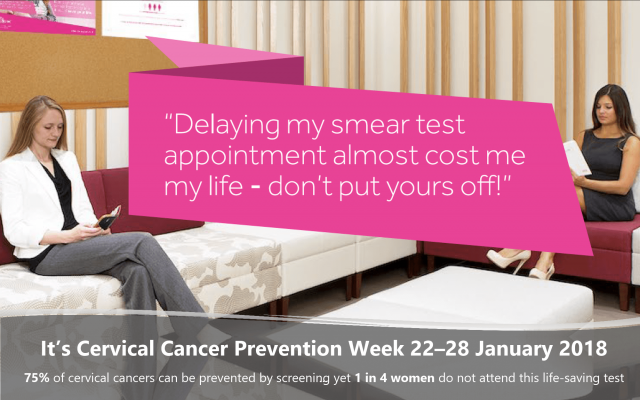
The theme for Cervical Cancer Prevention Week 2018 is “Reduce your risk”
Join in from 22 – 28 January 2018 to ensure more women know how they can reduce their risk of cervical cancer

Increasing the number of women who undergo cervical screening is vital. By identifying and treating precancerous changes it will reduce the number of women who develop and then require treatment for cervical cancer.
Sadly, every day 9 women in the UK are diagnosed with cervical cancer and 3 women will lose their lives to the disease.
The facts
- Cervical cancer is the most common cancer in women under 35
- 75% of cervical cancers can be prevented by cervical screening (smear tests)
- However 1 in 4 women do not attend this potentially life-saving test
Cervical cancer is the most common cancer in women under 35 but is largely preventable thanks to cervical screening
The number of women dying from cervical cancer has halved over the past 28 years as a result of the NHS screening programme as well as improvement in treatment.
The majority of the 3,000 women diagnosed with cervical cancer each year have delayed coming forward for screening which has impacted on their ability to have early changes treated.
Worryingly, there has been a decrease in women taking up screening in recent years across all age groups.
How can you ensure your sisters, daughters, mothers and female friends reduce their risk of the disease?
Take up the opportunity for cervical screening when you are contacted. Think of your sisters, daughters, mothers and female friends – encourage them to have the test and to spread the word that cervical screening SAVES LIVES
This means:
- Attending cervical screening when invited
- Knowing the symptoms of cervical cancer and seeking medical advice if required
- Talking to friends and family to ensure they know how they can reduce their risk




